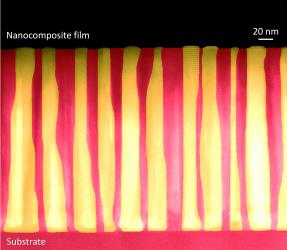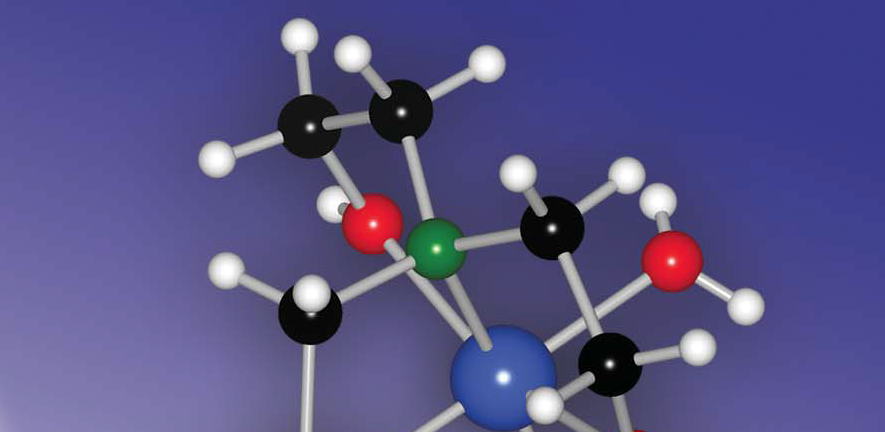
Materials design and processing is a core subject within the Department of Materials Science & Metallurgy in Cambridge, with many truly novel themes with the potential of a wide impact. The topic cuts across all materials types and functionalities, from ultrahigh strength, high temperature metallic alloys and ceramics to lightweight alloys, tough metallic glasses, biological materials, electronics and energy materials. Materials are being designed in intelligent ways: New hierarchical structures are being fabricated, new compositions and combinations of materials are being explored and surfaces are being treated in new ways. Materials are being fabricated across all length scales from nanoscale to km scale using a variety of innovative processing techniques developed by different groups across the deparment.
Composites & Coatings for Demanding Environments (Elliott)
Coatings are being developed for a range of demanding applications, including corrosion resistance, thermal insulation and wear protection, as well as membranes for removal of harmful particulate and pathogens. Customised facilities (laboratory and industrial scale) are used, including vacuum plasma spraying and plasma electrolytic oxidation as well as rigs for for assessment of resistance to thermal shock, thermal cycling, Type II corrosion under applied mechanical loads, response of materials to nanoindentation at high temperature and the performance of filtration and photocatalytic systems. These studies are supplemented by a wide range of numerical modelling activities.
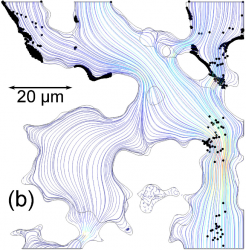
Metallic Glasses with high flow stress and toughness for structural applications (Greer)
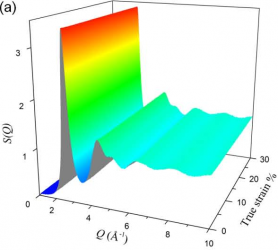
Metallic glasses have a wide spectrum of attractive properties, e.g., the highest value of the product of flow stress and toughness, two properties that are normally opposing. The possible range of energy accessible in a metallic glass of a given composition is vast – roughly the same as the heat of melting. How the range of the glassy state can be extended by innovative processing techniques is being explored. Key interests are in ultrastable states with exotic glass transition behaviour and in high-energy states for ultra-rapid switching. There are also possibilities for optimization of magnetic and mechanical properties.
Additive manufacturing offers the prospect of producing engineering components with fundamentally new architectures, potentially giving dramatic improvements in efficiency. New alloys are being designed and new manufacturing methods being studied to produce higher quality components for nickel–based superalloys in turbines.
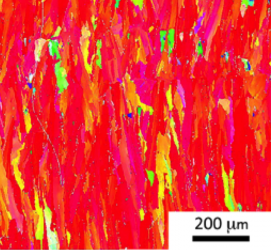
Ultrastrong, lightweight carbon nanotubes for structural and electrical Applications (Elliott)
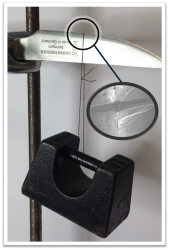
High performance yarn-like fibres made from pure carbon nanotubes (CNTs) have the potential to revolutionize several important application areas, from lightweight power cables to composite armour. Using a chemical vapour process originally developed in the department, Dr. Elliott and team synthesize CNT fibres with extremely high strength and stiffness, combined with electrical and thermal conductivities that rival or exceed those of metals in specific terms, and have the potential to match them in absolute terms. The challenge is to control the structure and orientation of CNTs within the fibre over a hierarchy of length scales, from the molecular to bundle to fibre and to develop processes that translate to industry. The Cambridge team are working with companies to increase throughput.
Microstructural engineering for lightweight alloys and toughening of brittle alloys
Deformation mapping with submicron resolution is used to study how the mechanical properties of TiAl alloys are influenced by microstructure. It has been demonstrated that nucleation of damage strongly depends on the way shear localization associated with slip bands or twins is accommodated at the interfaces between grain colonies. Crystal plasticity calculations are also being used to explore conditions that minimize stress concentration at the interfaces. How brittle materials plastically deform and how they can be made tougher is also being studied using techniques pioneered in Cambridge, with a combination of computational and experimental techniques to determine yield stresses over a wide range of temperatures.
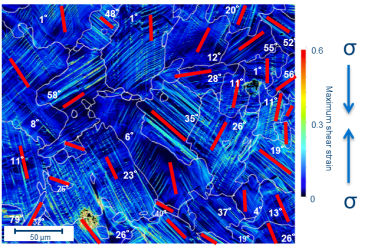
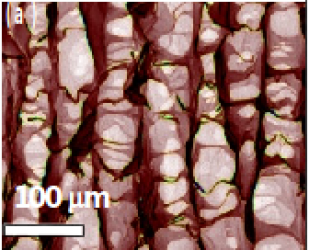
Ideally, three dimensional scaffold environments should mimic the composition of natural tissue, providing space for cell colonisation and for nutrient and oxygen transport. Freeze-drying, a “clean” process which offers the ability to control structure and mechanical properties, can be used to produce porous collagen scaffolds. The process involves freezing a solution or suspension to form an interpenetrating network of pure ice crystals surrounded by the “rejected” solute. Ice crystals are removed by sublimation, leading to the formation of a porous scaffold. Careful control of the processing parameters is being undertaken to produce a range of different pore sizes and orientations.
Designing and fabricating nanoscale composites for electronics and energy (Driscoll)
Great demands are placed on materials for applications in emerging electronic and energy devices. Complex oxide materials with their wide range of functions have great potential to meet the requirements but they need to be made at the nanoscale and with minimal defects. Although this is very challenging, novel nanocomposite films enable these challenges to be overcome. Processing methods e.g. advanced pulsed laser deposition, and atmospheric-pressure spatial atomic layer deposition are being developed to fabricate the structures for key applications in superconducting power, more efficient and faster memory and improved energy harvesting materials. Prof. Driscoll’s structures and processes have been adopted around the world in the superconductor industry enabling new applications to emerge, e.g. in high field magnet windings and in fault current limiters.
